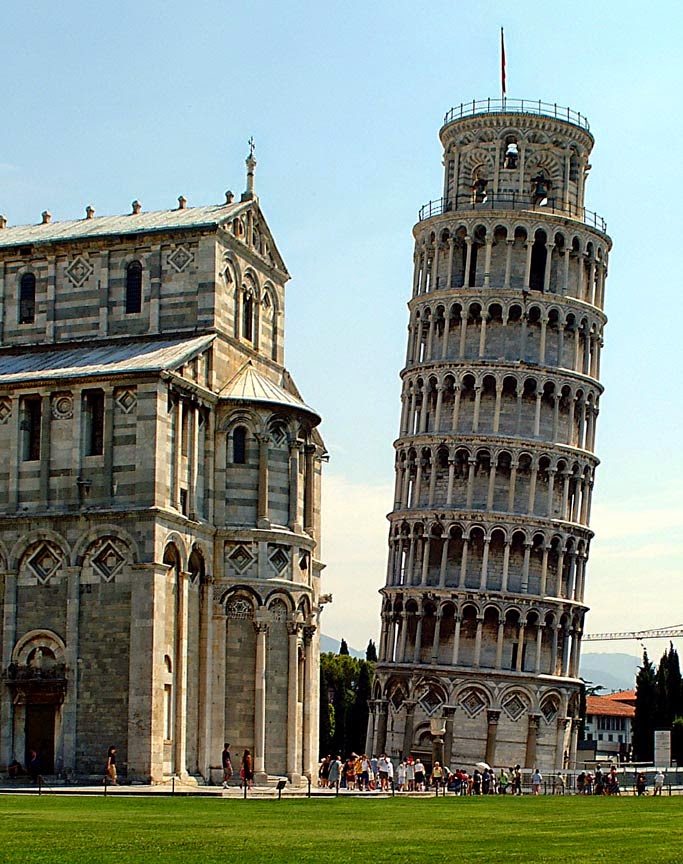Leaning Tower of Pisa
The bell tower or the tower of Pisa is known worldwide for the beauty of the architectural structure and the singular slope that makes it a real static miracle. Launched in August 1173 (1174 according to the calculation of Pisa), as documented by an inscription to the right of the entrance, was stopped half way to the third floor due to soil subsidence.


The work in 1275, who took part Giovanni di Simone and Giovanni Pisano, taken with the addition of three floors along a line that tends to curve in the opposite direction to the slope in an attempt to correct the inclination; in the second half of the fourteenth century, perhaps by Tommaso Pisano (1350-1372) was added the belfry. A circular, covered with white marble, the Tower part of the decoration similar to that of the apse of the cathedral over a prime blind arcades on columns half are six orders of loggias and the cylindrical belfry, smaller diameter, with openings framed by blind arches and hanging coronation arcs.

The angle from the vertical increases on average each year about 6 ", amounting to an increase of the overhang of 1 mm; from 1990 are ongoing consolidation interventions that have reduced the inclination of a few millimeters. The inside of the bell tower has the form of a large cylindrical well. a spiral staircase, made up of 294 steps, open to each floor by an output corresponding to the outer annular gallery, salt to the terrace above the top floor where, by the belfry, are seven bells dating from sec. XVII to XIX; here Galileo conducted the experiments around the falling bodies; the impressive view of the city and the territory.



 |
 |

The angle from the vertical increases on average each year about 6 ", amounting to an increase of the overhang of 1 mm; from 1990 are ongoing consolidation interventions that have reduced the inclination of a few millimeters. The inside of the bell tower has the form of a large cylindrical well. a spiral staircase, made up of 294 steps, open to each floor by an output corresponding to the outer annular gallery, salt to the terrace above the top floor where, by the belfry, are seven bells dating from sec. XVII to XIX; here Galileo conducted the experiments around the falling bodies; the impressive view of the city and the territory.

(pisaonline.it)




0 comments